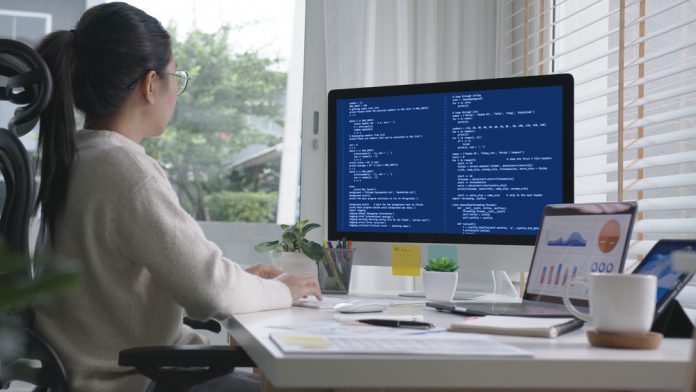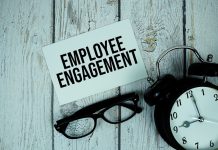
The expertise discrepancy paradigm
There is a structural gap in labor supply. While industries are adopting emerging technologies and remodeling business operations, the specialized skills required to perform the operations are scarce or not available. The employees’ current expertise does not match the job roles. Degrees also do not suffice.
According to Harvard Business Review research, companies are already ditching degree requirements for 31 percent of high-skill and 46 percent of middle-skill positions. The advent of the new era where even qualified workers do not meet the skill requirements has led to a new revolution in corporate training and employee development.
Take the case of energy companies. Digital transformation and the shift to clean energy resources are driving the creation of 10.3 million net new job positions by 2030. The roles include specialization in power generation, electrical efficiency, automotive fuel innovations, and grid modernization. With ongoing advancements, companies and institutions have to upgrade their training modules continuously. Companies such as BP, Shell, and Centrica have graduate and technical programs to train new and re-train existing employees for future roles.
Training for a future-ready workforce
Closing the skills gap is key to addressing the qualified-yet-not-qualified issue. Gartner predicts that upskilling will take precedence over experience in the next decade. So, companies must focus on training or retraining employees to improve performance and enhance productivity. Progressive companies appoint chief learning officers to streamline their employees’ learning and development (L&D) functions. LinkedIn’s 2022 Workplace Learning Report revealed that 72 percent of organizations had made learning and development (L&D) a strategic function.
Unfortunately, simply proclaiming L&D as a strategic function can also lead to failure if the company has not prepared for it. Reskilling and upskilling is a complex task that requires strategic planning and execution. Companies often fail to acquire the insights and commitment required to prepare and train employees effectively. A Deloitte survey found that only 17 percent of organizations could anticipate the skills employees would need to sustainably perform for the next three years. Organizations are still seeking a strategy that can help build sustainable skills.
A sustainable upskilling strategy
Every employee possesses a certain set of skills and needs another set to perform their given task. A manager may be good in operations but may need to acquire people management skills. An IT professional may need to learn the workings of a new version of a containerization platform. The company may need employees to get familiar with the newly deployed software system. Companies will need to develop an L&D strategy that ensures each of their employees receive the right training to boost their performances.
While each training module may be unique, the L&D officer will need to follow a step-wise process to ensure effective lesson delivery. Here’s how you can start your L&D journey:
- Build an upskilling plan – The foundation of any plan is understanding the current skills level and the critical skills that will equip employees to perform their tasks. Map the skills gaps and assess the workforce’s ability to support new initiatives. The information will help you create a holistic L&D plan.
- Identify skill transfer opportunities – The plan must also map the adjacent abilities that help support the reskilling process. Create and maintain a skill gap analysis table to enable employees to contribute with their competencies to improve the teams’ performance.
- Set goals – Goals enable the organization to keep pace with its performance objectives. Use the specific, measurable, achievable, relevant, and time-bound (SMART) goal-setting approach to ensure you accomplish your aims within the stipulated time frame. Consider setting aside incentives to encourage employees to complete the learning module on time.
- Use the 70-20-10 learning method – A holistic and effective L&D module necessitates 70 percent of the time spent on on-the-job training, 20 percent on peer-group coaching, and 10 percent on different tools and resources that can speed up the learning process. Depending on the subject and resources available, you can develop simulations, videos, and case studies to deliver engaging training.
- Establish a learning management platform – You will also need a platform that can closely manage and consistently deliver L&D programs and track each employee’s learning curve.
- Gather feedback and analyze employee progress – No upskilling program is complete without evaluating the employee’s performance. An effective program must include closely monitored KPIs comprising metrics for training progression, skills gap reduction, and productivity or proficiency improvement.
Creating value from upskilling
Every employee is an investment for the organization to ensure business success. In addition to fostering employee capabilities, the company must also adjust its talent acquisition model to keep up with the emerging talent requirements. First, the L&D function must stay up-to-date to adapt to the newly inducted professionals. Connecting the upskilling program with recruitment can uplift the company’s image. Lastly, the workforce planning process must align with the overall business direction and strategy to help you to identify and quantify the skills needed in the near future.
Consistent focus on employee development will provide the lever to drive your business toward greater operational productivity and success.




